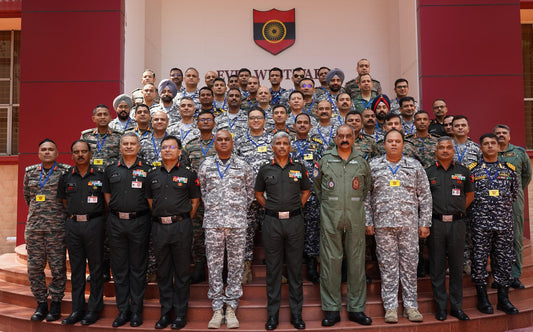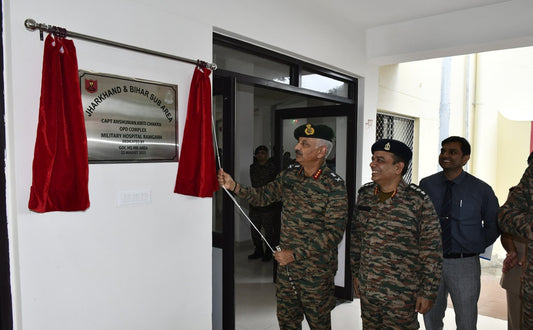IAS Officer Salary : Pay Scale, Benefits & Career Growth

The Indian Administrative Service (IAS) is a pivotal pillar of governance in India, shaping the lives of millions of citizens through policy-making, administration, and public service. As one of the most coveted career paths in the country, aspiring civil servants often seek clarity on the financial rewards and career trajectory associated with this renowned profession. The financial allure of the IAS, backed by a robust pay structure and numerous benefits, enhances the attractiveness of this career choice. This article delves deep into the intricacies of the IAS officer's salary, exploring the pay scale, benefits, career growth, and future outlook in light of the latest updates for 2025.
Historical Context
The IAS was formally constituted in 1950, reflecting India's commitment to an effective and efficient administrative structure post-independence. The service has evolved significantly over the decades, driven by the changing needs of governance and the complexities of administration in a diverse and vast nation. Initially, bureaucrats were primarily driven by the prestige associated with the position; however, as the country evolved, so did the compensation structure to reflect the responsibilities and challenges faced by IAS officers. With successive pay commissions, notably the 7th Pay Commission, IAS salaries have become increasingly structured, aligning more closely with current cost-of-living metrics and recognizing the officers' dedication to public service.
IAS Officer Salary Structure 2025
Comprehensive Overview of Pay Levels
As of 2025, the salary structure for IAS officers ranges significantly based on rank and experience. The following table summarizes the pay scale:
| Rank | Pay Level | Basic Pay (₹) | Approximate Total Salary (₹) |
|---|---|---|---|
| Junior Scale (SDM) | Level 10 | 56,100 | 80,000 - 1,00,000 |
| Senior Scale (ADM) | Level 11 | 67,700 | 1,00,000 - 1,30,000 |
| Junior Administrative Grade (Deputy Secretary) | Level 12 | 78,800 | 1,30,000 - 1,50,000 |
| Selection Grade (Director) | Level 13 | 1,18,500 | 1,50,000 - 1,80,000 |
| Super Time Scale (Joint Secretary) | Level 14 | 1,44,200 | 1,80,000 - 2,20,000 |
| Above Super Time Scale (Additional Secretary) | Level 15 | 1,82,200 | 2,20,000 - 2,50,000 |
| Apex Scale (Secretary) | Level 17 | 2,25,000 | 2,50,000+ |
| Cabinet Secretary | Level 18 | 2,50,000 | 2,80,000+ |
(The total salary includes Basic Pay along with Dearness Allowance (DA), House Rent Allowance (HRA), Travel Allowance, and other perks)
Breakdown of Basic Pay and Total Salary
The basic pay for an IAS officer depends primarily on their rank:
- Junior Scale Officers (Sub-Divisional Magistrates) start at a basic pay of ₹56,100, with total remuneration ranging from ₹80,000 to ₹1,00,000 per month.
- As they progress to Senior Scale, they can expect a basic pay of ₹67,700, leading to a total salary bracket of ₹1,00,000 to ₹1,30,000.
- This progression continues, leading to a Cabinet Secretary, which concludes with a remarkable total pay exceeding ₹2,80,000 monthly.
The gradual increase is reflective of the escalating responsibilities and challenges that come with each role, reinforcing the meritocratic nature of this service.
Benefits and Allowances
In addition to their basic salaries, IAS officers enjoy an array of allowances which can substantially boost their overall compensation. These include:
- Dearness Allowance (DA): A cost-of-living adjustment, crucial to offset inflation.
- House Rent Allowance (HRA): Varies based on the city of posting, providing housing support.
- Travel Allowance: Covers expenses incurred while on official duties.
- Medical Facilities: Access to government healthcare services for officers and their families.
- Official Vehicles: Typically provided for ease of commuting in administrative roles.
- Housing Facilities: Government accommodations or housing subsidies can be availed.
- Pension: A comprehensive pension scheme ensures financial security in retirement.
Moreover, IAS officers occasionally receive lifetime benefits, including subsidized transport and housing. These allowances not only enhance their financial well-being but also reflect the government’s commitment to providing a conducive work environment for its bureaucratic cadre.
Career Growth & Promotions
An IAS officer's career is meticulously structured, with promotions largely dependent on tenure and merit.
Promotion Timeline and Pathway
- Entry Level: Officers begin as Junior Scale (Sub-Divisional Magistrate) during a probation period of roughly 2 years.
- After 5 Years: They progress to the Senior Time Scale as Additional District Magistrates (ADM).
- 9-13 Years: Upon further experience, they can rise to the Junior Administrative Grade, serving as Deputy Secretaries.
- 13-16 Years: Officers can achieve the Selection Grade at the Director level.
- 16-24 Years: The Super Time Scale allows qualified officers to serve as Joint Secretaries.
- 25+ Years: Advanced positions such as Additional Secretary and Secretary become attainable.
- 30+ Years: The highest echelons of the IAS include Chief Secretary of a State or Cabinet Secretary of India, where they can command a robust pay structure at level 18.
Meritocracy and Assessment
The promotion process is rigorously governed by screening committees, which ensures that merit remains the cornerstone for advancement. Continuous performance evaluations and assessments determine eligibility for higher ranks, ensuring that only the most capable officers can ascend to senior roles.
Salary Progression Example
To provide a clearer picture of salary growth over time, let's break down how an IAS officer's pay might evolve throughout their career:
- During Probation: A newly appointed IAS officer can expect a combined monthly salary ranging from ₹80,000 to ₹90,000.
- After 5 Years: As they progress to the Senior Time Scale, their salary could rise to between ₹1,00,000 and ₹1,30,000.
- Further Progression: In higher grade or secretarial roles, total salaries can soar well beyond ₹2,00,000 to ₹2,80,000+ monthly.
This progressive structure illustrates not just financial growth but the increasing scope of authority and responsibility that accompanies each promotion.
Key Elements of the IAS Career
A. Educational Background and Training
To become an IAS officer, candidates typically possess strong educational credentials. Most successful candidates hold a bachelor’s degree at a minimum, with many holding master’s degrees or professional qualifications. Upon selection, they undergo rigorous training at the Lal Bahadur Shastri National Academy of Administration (LBSNAA), where they receive theoretical insights and practical knowledge to prepare them for real-world governance challenges.
B. Role and Responsibilities
IAS officers are entrusted with varying responsibilities, including:
- Policy Formulation: Crafting policies that impact governance and public welfare.
- Administrative Management: Overseeing administrative functions at various governance levels.
- Revenue Collection: Ensuring smooth revenue operations at the district level.
- Developmental Initiatives: Implementing government schemes and development programs.
As they rise through the ranks, their roles become increasingly strategic, influencing critical governance decisions affecting millions.
Case Studies and Real-world Applications
Real-life examples of IAS officers highlight their contributions and the impact of their roles on society. For instance, IAS officer K. Anshul, who was instrumental during the Covid-19 pandemic management in Maharashtra, effectively coordinated resources, policies, and community outreach programs that saved countless lives. Meanwhile, Anurag Srivastava, who developed sustainable practices in local governance, has shown how dedicated IAS officers can inspire change at the grassroots level.
These narratives not only exhibit individual achievements but also underscore the profound influence that IAS officers wield over public welfare and policy-making.
Comparative Analysis of IAS Salaries
When comparing the salaries of IAS officers with their counterparts in other services—like the Indian Police Service (IPS) or Indian Foreign Service (IFS)—it's evident that IAS offers a more structured and lucrative pay scale. While IPS and IFS officers do enjoy impressive salaries and allowances, the trajectory and benefits of the IAS remain superior in terms of comprehensive compensation and post-retirement security.
Challenges Faced by IAS Officers
While the IAS career is rewarding, it also presents challenges such as:
- High Pressure: The demands of the job can lead to immense stress and long working hours.
- Public Scrutiny: Officers frequently work under public and media scrutiny, which can complicate decision-making processes.
- Bureaucratic Constraints: Navigating complex bureaucratic systems and political pressures can hinder direct governance efforts.
Solutions and Recommendations
To address these challenges, there’s a need for:
- Mental Health Support: Regular mental health assessments and counselling services.
- Flexibility in Work Culture: Encouragement of a more balanced approach towards work hours and job responsibilities.
- Leadership Training: Ongoing professional development programs focusing on leadership and crisis management.
Future Trends and Predictions
The future outlook for IAS salaries appears optimistic, especially with ongoing discussions around public sector reforms and the role of technology in governance. Enhanced transparency and digital governance initiatives might make it necessary for IAS officers to adapt to new responsibilities, which could further influence their pay structures in future pay commissions.
Moreover, the increasing recognition of work-life balance and mental health in public service may lead to beneficial reforms, enhancing job satisfaction and retention rates among officers.
Conclusion
In summary, a career with the IAS not only offers substantial financial rewards but also presents a pathway to influence and impact national governance. With a clear progression model, satisfying benefits, and defined roles, IAS officers remain a vital force in shaping India's administrative landscape. For those contemplating this career path, the combination of service to the nation and competitive remuneration makes the IAS a prestigious choice. As the landscape of governance evolves, so too may the rewards and challenges associated with this respected profession, ensuring that it remains a dynamic and fulfilling career for future generations of civil servants.
Aspiring officers must remain conscientious of these dynamics, prepared to embrace their responsibilities and the accompanying challenges, as they embark upon one of the most illustrious careers in public service.



















